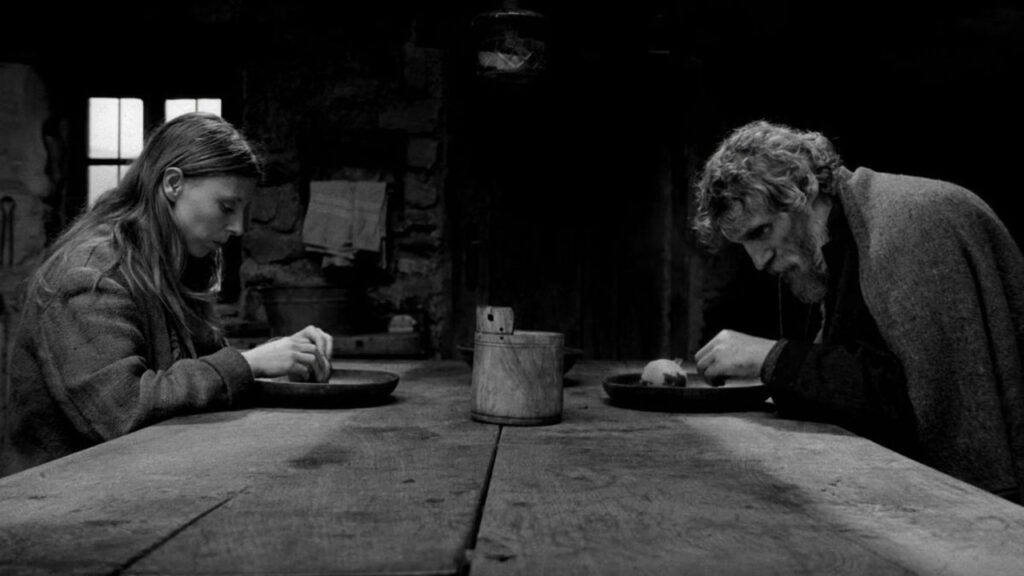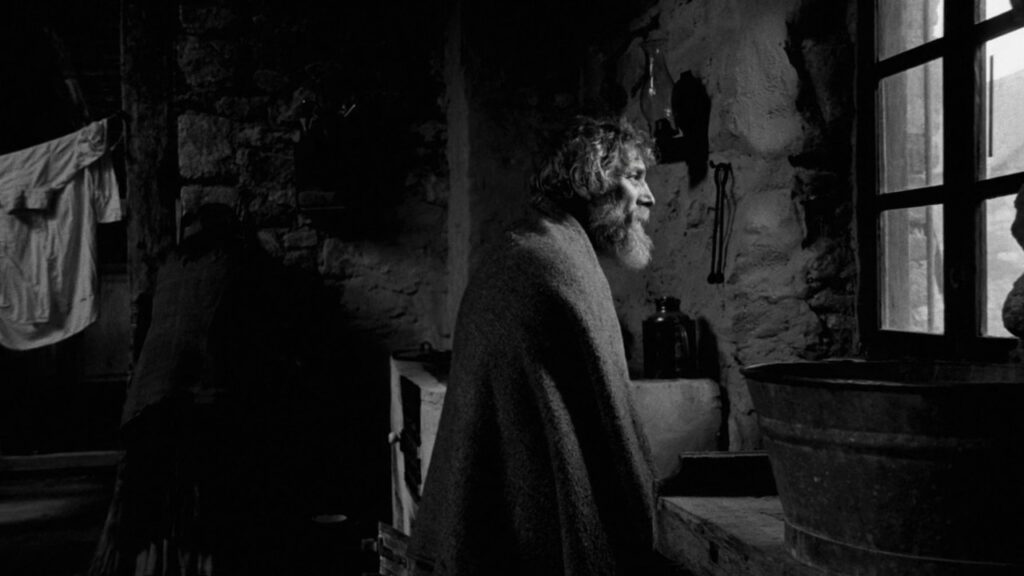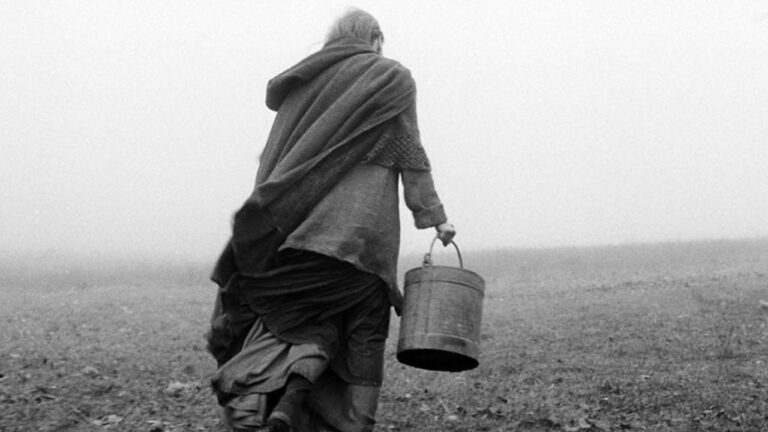Béla Tarr’s final film, ‘The Turin Horse,’ stands as an uncompromising farewell not only to the world of cinema as he practiced it, but to the very possibility of human persistence in a collapsing world. Co-directed with Ágnes Hranitzky, the film is inspired by a fragment of the philosophical myth of the infamous Friedrich Nietzsche’s 1889 breakdown, when he is said to have clasped a beaten horse in Turin before descending into madness, and rather than showing us a dramatized Nietzsche, the creator shifts the focus to the nameless horse and its owners. A father and daughter eking out an existence in an increasingly desolate landscape.
The story is almost non-narrative, unfolding over six days in 30 long takes. Each day, the peasant and his daughter repeat the same mundane tasks. Dressing, fetching water, boiling potatoes, and attempting to harness the horse. Yet repetition is not stasis, because with each cycle, some aspect of their world erodes. The horse refuses to work or eat, the well dries up, neighbors arrive and depart with cryptic words of warning, and finally, light itself is extinguished. The gradual unraveling is both literal and metaphysical, as if the fabric of life is giving way to an irreversible void.
Béla Tarr Portrays The Relentlessness of Life and the Heaviness of Human Existence

The cinema was shot in austere black-and-white by cinematographer Fred Kelemen. He made sure that the film transforms into elemental forces by capturing wind, dust, and silence into oppressive presences. The unrelenting windstorm outside the cottage becomes a kind of cosmic antagonist, indifferent yet suffocating.
We see how Mihály Víg’s score, which was a circling lament of strings and organ, underlines the sense of inevitability, as if time itself is collapsing in on the characters.
What makes The Turin Horse extraordinary is its refusal of narrative comfort, as it keeps to the idea of resisting allegory as much as the main plot. The father and daughter are not symbols so much as embodiments of endurance, because they were stripped of individuality, left with only ritual in a world that is ceasing to accommodate life.
Tarr has said that the film is about “the heaviness of human existence,” and the relentless pace of decline makes it a kind of anti-epic. It is a heavy story where nothing expands, only contracts till the very end.
The Turin Horse Reduces Existence To Repetition, Decay, and Darkness

As Tarr’s final film, it feels like a cinematic testament. Where Sátántangó was expansive, sprawling over seven hours to reveal the cycles of corruption and delusion in a ruined village, The Turin Horse is compressed, focusing with merciless precision on six days at the edge of existence. Both films suggest futility and repetition, but where Sátántangó exposes the perpetual failure of human schemes, The Turin Horse contemplates the end of even the possibility of motion, will, or hope.
In the end, we come to an understanding that the film is less about Nietzsche’s myth than about cosmic exhaustion. It is about what remains when the animal, the human, and the earth itself can no longer sustain life. Watching it is an act of fortitude, but also an existential reflection on endings of stories, of cinema, of rumination. Tarr closes his career not with catharsis but with extinction, leaving audiences in the silence of a world without light.




